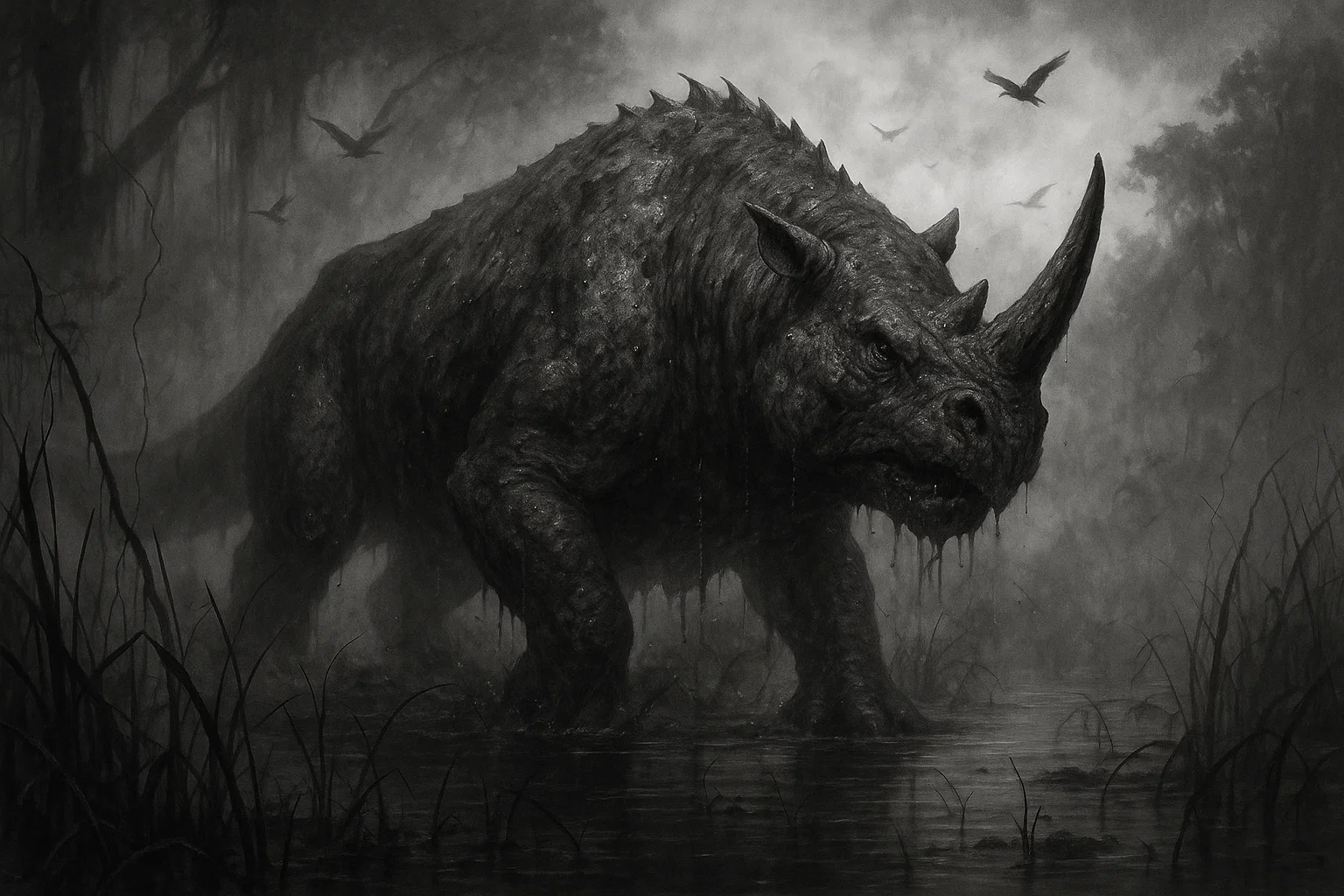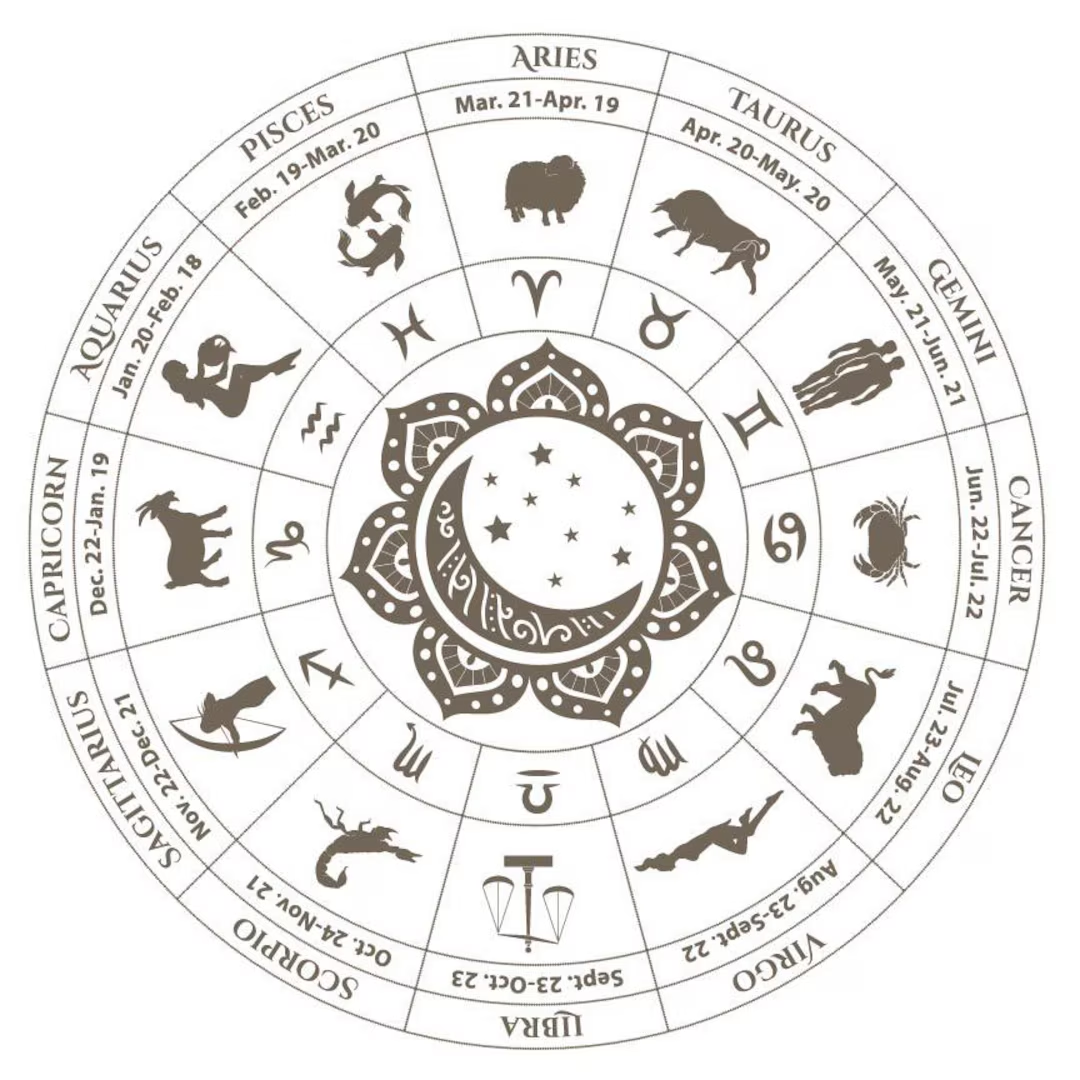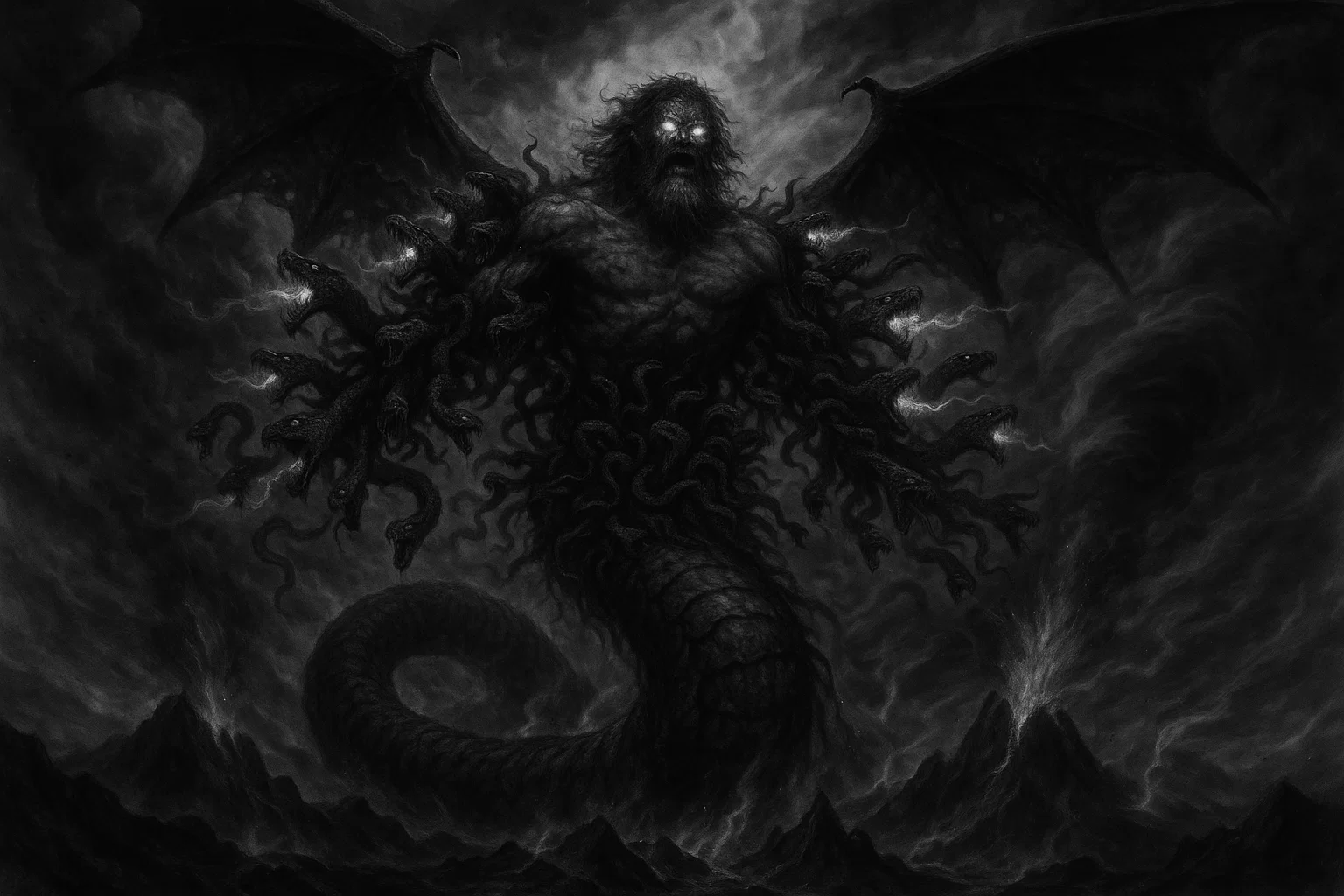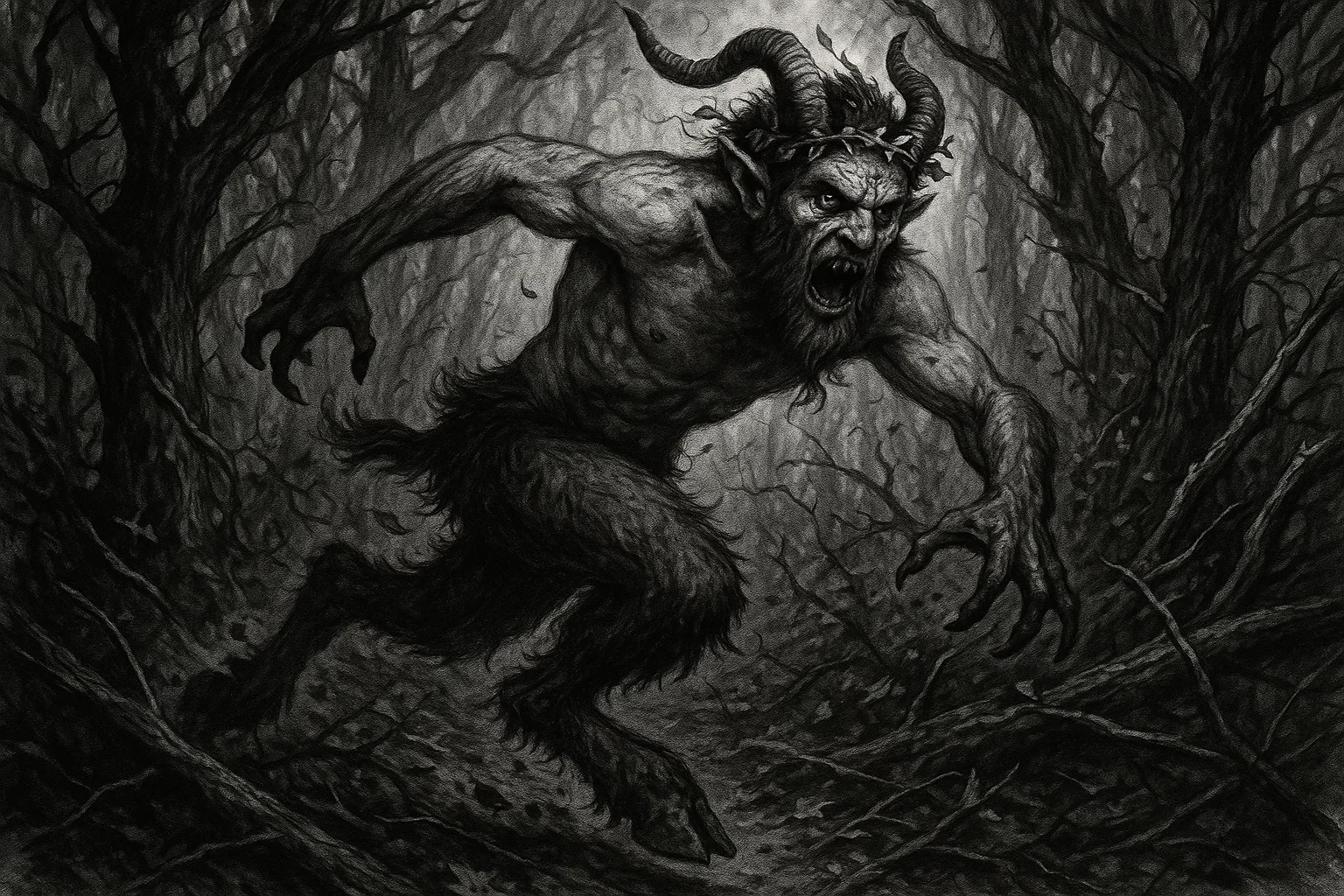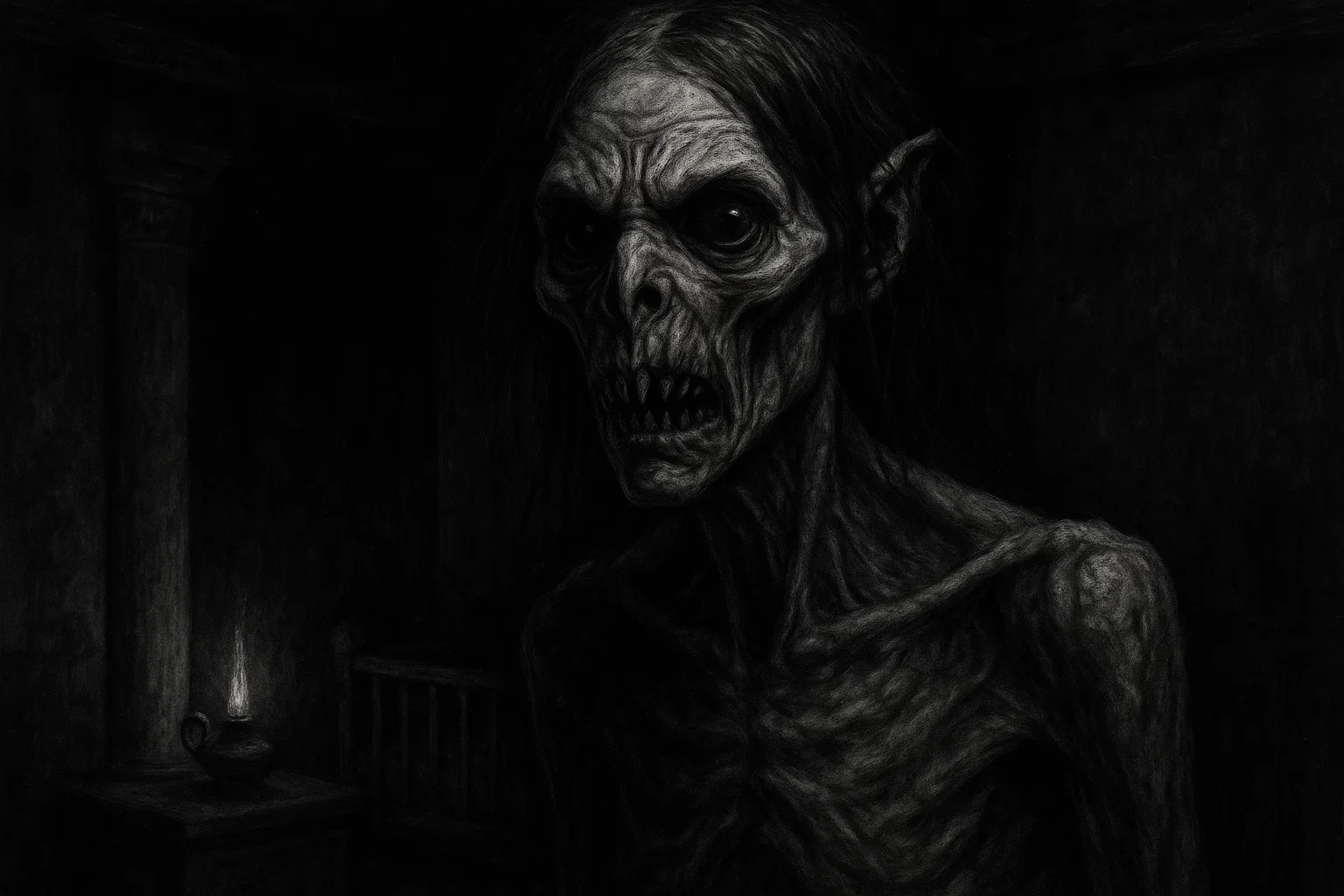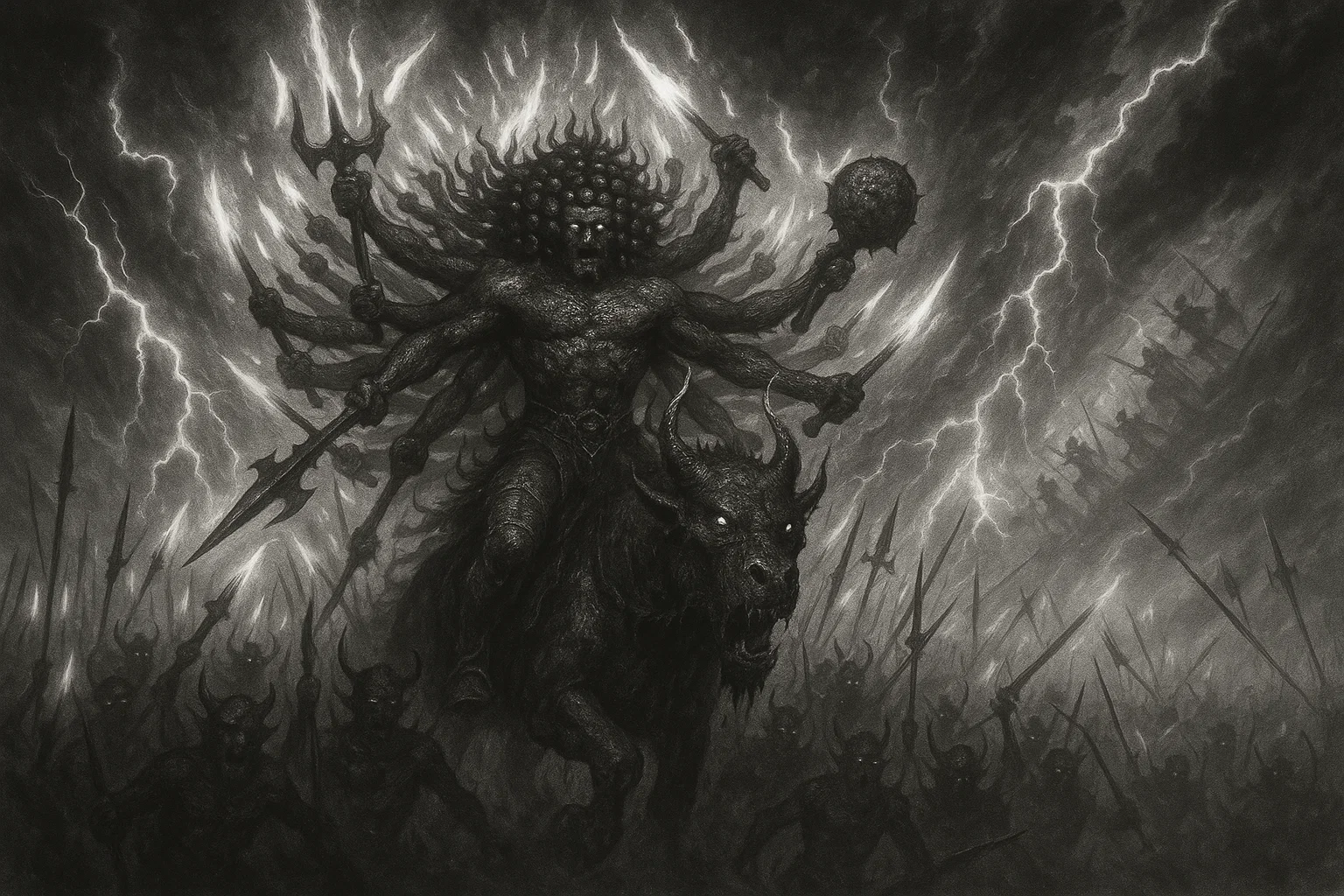The Mazomba is a lesser-known cryptid reportedly inhabiting the dense, remote forests of the Democratic Republic of Congo (DRC) in Central Africa.
Descriptions of the creature vary, but it is typically portrayed as a large, reptilian or semi-aquatic animal with characteristics reminiscent of both an extinct dinosaur and a modern rhinoceros.
The tales of the Mazomba are deeply rooted in the folklore of local indigenous communities, who describe a secretive, aggressive creature rarely encountered by humans.
Summary
Overview
| Attribute | Details |
| Name | Mazomba |
| Aliases | Often associated with Mokele-mbembe |
| Threat Level | Aggressive, potentially dangerous to humans and other animals |
| Habitat | Dense rainforests, deep rivers, and swampy areas of the Congo Basin |
| Physical Traits | Varies; described as large, reptilian/mammalian, bipedal or quadrupedal, with a large horn, thick hide, and a long tail. Size estimates are highly speculative. |
| Reported Sightings | Likouala region of the Republic of the Congo, Democratic Republic of Congo, Cameroon |
| First Documented Sighting | Early 20th century, though local legends predate this. |
| Species Classification | Speculative classification: Reptile (possibly surviving dinosaur), Mammal (unknown species of rhinoceros or relative), or Unknown. |
| Type | Terrestrial and Semi-aquatic |
| Behavior & Traits | Elusive, secretive, often solitary, territorial, and destructive to vegetation in its path. |
| Evidence | Eyewitness accounts, anecdotal evidence, local folklore. |
| Possible Explanations | Misidentification of known large mammals (e.g., forest elephant, rhinoceros), exaggeration of local fauna, or complete folklore. |
| Status | Ongoing mystery, primarily supported by cryptozoological interest. |
Who or What Is the Mazomba?
The Mazomba is a mysterious animal said to inhabit the vast, unexplored swamplands and river systems of the Congo rainforest.
It is classified as a cryptid—an animal whose existence has been suggested but remains unproven by scientific consensus—and is often cited in cryptozoology alongside more famous African cryptids, such as the Mokele-mbembe.
Unlike the Mokele-mbembe, which is generally described as a long-necked sauropod-like creature, the Mazomba is more frequently depicted as a heavy, thick-skinned, horned beast, sometimes with two legs but often with four.
Its identity is largely a puzzle, with some descriptions leaning toward an unknown rhinoceros species or a large, heavily built mammal. In contrast, others suggest a surviving species of horned reptile or dinosaur.
The creature’s name and legend are primarily preserved in the oral traditions of local Pygmy tribes and other forest-dwelling peoples, who tell cautionary tales of its destructive power and tendency to attack canoes and large animals.
Researchers believe that the various accounts of the Mazomba may, in fact, refer to several different unknown species or simply a common, large, and aggressive animal seen under poor conditions.
Your Personalized, Hyper Accurate Moon & Astrology Reading
Limited time offer: Get your FREE, fully personalized Moon & Astrology Reading that takes astrology to a whole new level. Discover the secret depths of your personality, relationships, and true purpose in life.
What Does the Mazomba Look Like?
Descriptions of the Mazomba are inconsistent, suggesting either multiple creatures sharing a name or significant variations in local legends.
A typical, consolidated description portrays the Mazomba as an immensely large, thick-set animal, often compared to a rhinoceros but with anomalous features. Some accounts describe it as bipedal, while others suggest it is quadrupedal, making it difficult to classify with confidence.
Key physical traits frequently mentioned include:
Size: Estimates vary wildly, but it is often described as being larger than a hippopotamus or comparable in size to a rhinoceros or a small elephant.
Hide: The creature possesses a tough, thick, armor-like, grayish-brown or reddish-brown hide, which is said to be resistant to spears.
Horn: A distinctive feature in many reports is a single, long horn on the snout, similar to a rhinoceros, or sometimes a small, bony crest.
Limbs and Tail: When described as bipedal, it is said to have short, powerful forelimbs and thick legs; when quadrupedal, it possesses massive, heavy legs. A long, stout tail is also mentioned in some reports.
Head: The head is generally depicted as large and blunt.
The conflicting descriptions—a bipedal reptile in some tales, a quadrupedal horned mammal in others—make it challenging to form a single, coherent picture of the Mazomba.
You May Also Like: Lizard Man of Scape Ore Swamp: Creepiest Facts Revealed
Habitat
The purported home of the Mazomba is the vast, highly inaccessible Congo River Basin, specifically within the rainforest and swamp regions of the Democratic Republic of Congo (DRC) and the neighboring Republic of the Congo.
This area is characterized by dense, primary rainforest, an equatorial climate with high temperatures and heavy rainfall, and an extensive network of sluggish rivers, large flooded forests, and swampy, boggy terrain.
The creature is believed to favor the most remote parts of these swamplands, where human penetration is minimal or nonexistent. These environments offer the creature ideal conditions for a large, secretive animal: ample water, dense cover to hide its movements, and abundant, often unexplored, food sources.
The remoteness of the region—which contains some of the least-mapped areas on Earth—is cited by cryptozoologists as a primary reason the Mazomba could potentially avoid detection. The rivers, such as the Likouala, are thought to serve as major travel corridors for the cryptid.
Local accounts often stress that the Mazomba is most likely to be encountered along riverbanks or within the bais (forest clearings) that border the deepest swamps.
Mazomba Sightings
Documented sightings of the Mazomba are scarce and primarily rely on anecdotal accounts collected by explorers and cryptozoologists in the 20th and 21st centuries.
| Date | Place | Witness Details | Description | Reliability |
| Early 20th Century | Interior regions of the Belgian Congo (now DRC) | Local Pygmy tribes and indigenous hunters | Tales of a large, rhino-like, tusked or horned beast inhabiting the deepest swamps and river systems. | Low: Pre-scientific collection, rooted in oral tradition. |
| 1920s | Likouala region, French Congo (now ROC) | French colonial officer | Reported seeing a massive, gray, four-legged animal with a thick, short horn, which broke vegetation in its path. | Low: Single, unverified account. |
| 1960s | Near the Lake Tele region, ROC | Congolese villagers | Descriptions of large, three-toed tracks and loud, unsettling bellows attributed to an animal larger than a hippo or forest elephant. | Low: Indirect evidence, sound, and tracks. |
| 1980s | Northern DRC | Local fisherman | Claimed to have narrowly avoided a confrontation with a large, angry, brown-skinned animal with a long tail that overturned his small canoe. | Low: Single eyewitness account, potentially exaggerated. |
| 2000s | Cameroon/Congo border region | Unidentified research team members | Vague reports of a large creature’s movement in the underbrush and loud splashing sounds in the water. | Low: Non-definitive observation. |
Awaken XT is unlike anything you’ve ever tried before…
…it’s based off a closely guarded formula that’s said to be able to supercharge your pineal gland and help you access your untapped inner power. With it’s unique blend of extremely hard to source ingredients, Awaken XT helps support the healthy functioning of your pineal gland, as well as your other organs in your body.
The French Colonial Reports (Likouala Region, 1920s)
One of the earliest “documented” sightings, or at least one of the earliest to enter the Western cryptozoological narrative, originates in reports allegedly filed by a French colonial officer serving in the then-French Congo (now the Republic of the Congo) in the 1920s.
While specifics are difficult to verify, the officer reportedly encountered and documented accounts from local residents of a fearsome, quadrupedal creature resembling a rhinoceros but notably larger and more aggressive.
The officer’s own sighting was reportedly brief—a glimpse of a massive, grayish animal with a thick hide and a horn—as it disappeared into the swamp. This report helped cement the rhino-like description of the Mazomba in early cryptozoological literature.
You May Also Like: Is the Michigan Dogman Real? Bone-Chilling Sightings and Legends
Track and Sound Accounts (Lake Tele Area, 1960s)
During the 1960s, accounts from Congolese villagers in the area surrounding Lake Tele (a central point for Mokele-mbembe exploration) described both the long-necked cryptid and a separate, heavy, and destructive beast.
Villagers reported discovering exceptionally large, blunt, three-toed tracks in the soft mud along the riverbanks, distinct from those of known large fauna. Furthermore, there were persistent claims of hearing deep, guttural bellows that seemed too loud and deep to belong to a hippo or a forest elephant.
These accounts contributed to the idea of the Mazomba as a terrestrial or semi-aquatic heavyweight with massive feet.
Evidence & Investigations
Concrete, physical evidence supporting the existence of the Mazomba is nonexistent. All information comes from anecdotal eyewitness reports and indigenous oral tradition.
The primary “evidence” consists of the consistency of oral narratives across different Pygmy groups and other forest peoples in the Congo Basin. These stories, passed down through generations, describe a creature with specific characteristics (horned, heavy, aggressive) that exists alongside known animals.
Cryptozoologists argue that the persistence and detail of these accounts suggest a shared cultural memory of a real, unknown animal.
As noted in the sightings, large, ambiguous tracks have occasionally been reported near rivers and swamp edges. However, none of these track finds have been conclusively documented, cast, or verified by accredited scientists.
Potential explanations for these tracks include the prints of a splayed forest elephant or a large African rhinoceros (which are known to have occasionally inhabited parts of the Congo) seen under distorting conditions.
Expeditions into the Congo, primarily those searching for the Mokele-mbembe (such as those led by Roy Mackal, Herman Regusters, or Marcello La Sala), have also collected second-hand accounts of the Mazomba.
These investigations, however, have not focused solely on the Mazomba, nor have they yielded any direct proof—such as photographs, tissue samples, or verifiable skeletal remains—of its existence. Instead, they have primarily collected and logged the oral accounts as part of a broader study of unknown animals in the region.
No dedicated scientific or cryptozoological expedition has yet been mounted with the specific, stated goal of finding the Mazomba. Without physical data, the Mazomba remains entirely in the realm of folklore and speculation.
You May Also Like: Dingonek: The Mysetrious Predator That Terrified East Africa
Theories
Several theories attempt to explain the reports of the Mazomba, ranging from the purely cryptozoological to the strictly rational. These theories often try to reconcile the creature’s contradictory descriptions.
Surviving Rhinoceros Species
One of the most rational theories suggests that the Mazomba is a surviving, isolated, or unknown species of rhinoceros. The description of a large, heavy, horned mammal with thick skin strongly aligns with the known traits of the rhinoceros family.
While the majority of African rhinos live in savanna habitats, the Western Black Rhinoceros (Diceros bicornis longipes) once inhabited parts of Central Africa and was declared extinct in 2011.
Reports of the Mazomba may be the cultural memory or even rare sightings of an isolated, uncontacted population of a critically endangered or now-extinct rhino subspecies adapted to a swampier environment.
The sheer size and power of any rhinoceros, particularly when encountered unexpectedly in dense jungle, could lead to exaggerated descriptions, fueling the legend of a monster.
An Unknown Horned Reptile or Dinosaur
This theory is favored by many cryptozoologists, proposing that the Mazomba represents a small surviving population of a prehistoric animal. The inconsistent descriptions—part rhino, part reptile, sometimes bipedal—might be explained by the animal not fitting neatly into modern classifications.
Some speculate it could be a type of Ceratopsian (horned dinosaur, like Triceratops). However, this is highly unlikely given the massive evolutionary gap and geographic differences.
A more plausible, though still highly speculative, concept is that it could be an unknown type of large, semi-aquatic reptile with dermal armor and an aggressive disposition, which could account for the “horned” description.
The environment’s remoteness, consistent with the survival of coelacanths, supports the possibility of relict species.
You May Also Like: What Is the Holawaka? The Ethiopian Spirit Bird That Doomed Humanity
The Mazomba is an Alias for Mokele-mbembe
A common possibility is that “Mazomba” is simply another regional or tribal name for the more famous Mokele-mbembe. Both cryptids inhabit the same general region and are described as large, aggressive, and semi-aquatic.
While Mokele-mbembe is generally long-necked (sauropod-like), local folklore is not always scientifically precise. The names and descriptions of large, unknown animals can blend together or be transposed across different communities.
The differences in reported appearance (horned rhino vs. long-neck) may reflect different individuals, different age classes, or simply perceptual biases among witnesses who may have only seen parts of the animal.
Misidentification of Forest Fauna
The most skeptical and scientific view is that the Mazomba is a misidentification of known, large Central African animals.
The African forest elephant (Loxodonta cyclotis) is a large, powerful animal that lives in the dense rainforest and is known to be aggressive. Its presence in the dense, dark jungle could easily be misconstrued, especially if its trunk or tusks are partially obscured.
The common hippo is massive, semi-aquatic, and highly aggressive, often attacking canoes.2 A brief, partial sighting in the thick mud or water could easily be exaggerated into a monstrous creature.
Comparison with Other Similar Cryptids
The Mazomba, as a heavy, horned, terrestrial cryptid, shares characteristics with several other legendary animals worldwide.
| Cryptid | Location | Primary Physical Trait | Primary Habitat |
| Mokele-mbembe | Congo Basin, Africa | Long-necked, sauropod-like body | Rivers and swamps |
| Emela-Ntouka | Central African Republic | Large, elephant-sized, single horn | Swamps and lakes |
| Nandi Bear | Kenya, East Africa | Bear-like, sloped back, hyena-like | Savanna and forests |
| Yeti | Himalayas, Asia | Ape-like, bipedal, massive size | Snowy mountains |
| Megalodon | Oceans worldwide | Giant prehistoric shark | Deep ocean |
| Bunyip | Australia | Semi-aquatic, various forms (dog-like, seals, or reptile) | Swamps, billabongs, and creeks |
| The Beast of Gévaudan | France | Massive, man-eating wolf or wolf-dog hybrid | Forested highlands |
| Chupacabra | Puerto Rico, Americas | Reptilian, spiny creature or canine-like | Rural and mountainous areas |
| Olgoi-Khorkhoi (Mongolian Death Worm) | Gobi Desert, Mongolia | Large, segmented, worm-like | Desert sands |
| Aswang | Philippines | Varies, often human by day, winged by night | Rural villages |
You May Also Like: Is the Lukwata Real or Just an African Legend?
Is Mazomba Real?
The question of whether the Mazomba is a real animal remains an ongoing mystery supported entirely by cryptozoological theory and local tradition, not by verifiable data.
The core evidence—stories from indigenous people—is compelling in its consistency and detail; many cultures have legends of large creatures unknown to science. Furthermore, the Congo Basin remains one of the largest and least-explored wildernesses on the planet, making the discovery of a new, large animal technically possible.
However, from a scientific standpoint, the Mazomba lacks any definitive proof. The widely conflicting physical descriptions (bipedal vs. quadrupedal, reptilian vs. mammalian) suggest the creature is either a case of collective folklore or a misidentification of multiple known species—such as an elephant or a lone rhinoceros—observed in the low visibility of the dense jungle.
Until a body, unambiguous photographic evidence, or a tissue sample is recovered and scientifically verified, the Mazomba will remain a fascinating legend, serving as a powerful reminder of the vast, unexplored potential of the world’s most remote ecosystems.

